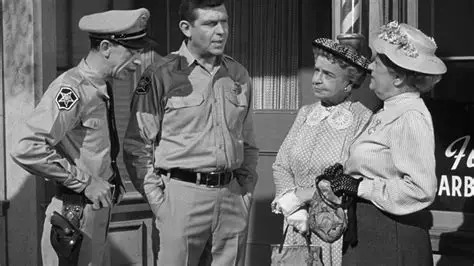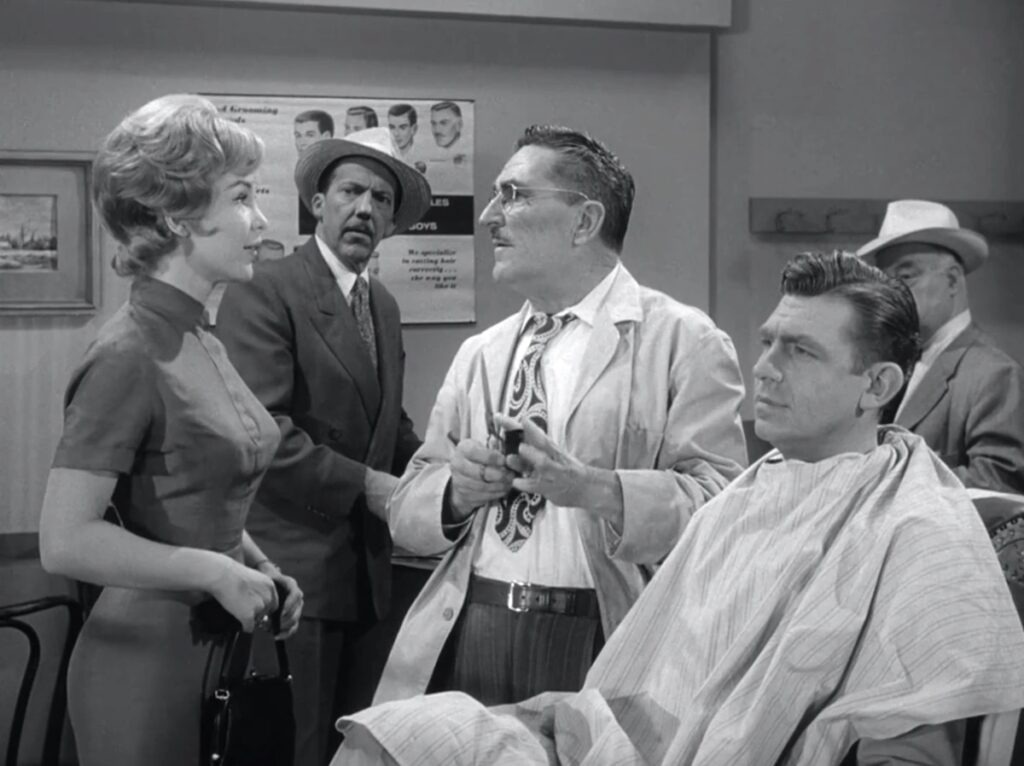
Introduction
So, you’ve watched The Andy Griffith Show more times than you can count, right? You probably think you’ve seen everything Mayberry has to offer. But here’s the kicker—those reruns? They’re packed with hidden gems, subtle jokes, and overlooked details that even the most devoted fans often miss.
Let’s hit rewind on those black-and-white episodes and dig into what’s really going on in Mayberry.
The Timeless Charm of Mayberry
Mayberry isn’t just a fictional town—it’s a nostalgic escape to a simpler time. But part of what makes it so comforting is how well-crafted it was. Every porch swing, every pie, every “Howdy” was designed to feel real. But that same realism is exactly what hides all the secrets in plain sight.
Why ‘The Andy Griffith Show’ Still Resonates Today
Why are folks still watching a show that aired more than 60 years ago? Simple: it balances humor with heart, community with individuality. And when you look closer, you realize how ahead of its time it really was. The reruns reveal layers of emotional depth, social commentary, and quirky character arcs that reward repeat viewings.
Watch Closely: The Subtle Art of Background Acting
Rewatch an episode and ignore the main action. Instead, focus on the background. You’ll catch townsfolk making curious faces, extras fumbling with props, and even some breaking character ever so slightly. It’s a reminder that Mayberry was alive—even when the camera wasn’t focused on it.
Continuity Errors That Slipped Past the Editors
Ever notice that Andy’s kitchen window changes size? Or that Opie suddenly owns a different dog? Continuity was loose back in the ’60s, and The Andy Griffith Show is full of blink-and-you’ll-miss-it inconsistencies. But instead of taking away from the charm, these goofs only add to the magic of reruns.
Andy Taylor’s Ever-Changing House
Take a closer look at Andy’s home layout. Sometimes the kitchen door leads outside; other times, it opens to a mysterious hallway. The house morphs from episode to episode like a TV version of a dream. Was it lazy set design—or something more surreal?

How Mayberry Changed Without Saying a Word
In early seasons, Mayberry feels isolated and intimate. But by the later seasons, you’ll notice paved roads, newer cars, and a slightly modernized feel. No one talks about it, but the set slowly updated with the times, subtly reflecting a world that was changing.
The Curious Case of Disappearing Characters
Ever wonder what happened to characters like Ellie Walker or Warren Ferguson? They vanished without explanation. TV in the ‘60s didn’t owe viewers a character arc—or even a goodbye. It’s only in reruns where those gaps feel glaring.
Barney Fife’s Bullet: Symbolism or Slapstick?
Yes, it’s funny that Barney only gets one bullet. But that detail is also a subtle commentary on responsibility and restraint. Barney’s bullet isn’t just a running gag—it’s a metaphor for controlled power. Watch his facial expressions when he mentions it. There’s pride, fear, even shame—all in one beat.
Opie’s Transformation Through the Seasons
In season one, Opie is a wide-eyed boy unsure of the world. By the final episodes, he’s wiser, more confident, and a budding moral compass. Ron Howard’s evolution on-screen isn’t just a performance—it’s a coming-of-age tale told in reruns.
Easter Eggs Hidden in Plain Sight
Watch carefully: some store signs change between scenes. Others reference real people from the show’s crew. Aunt Bee’s cookbook? A subtle nod to Frances Bavier’s own passion for cooking. These Easter eggs make reruns a treasure hunt.
The Real Story Behind Floyd the Barber
Howard McNear, who played Floyd, suffered a stroke mid-series. The crew lovingly worked around his condition, propping him up in scenes and writing scripts that allowed him to stay seated. Once you know this, Floyd’s scenes become even more poignant.
Frances Bavier’s Complex Performance as Aunt Bee
Bavier was famously difficult on set, but that complexity shines through in her acting. Aunt Bee isn’t just a sweet homemaker—she’s layered, sometimes stern, sometimes insecure. Reruns allow us to study how she evolves, especially in emotional storylines.
Guest Stars Who Became Legends
Before they were famous, many actors passed through Mayberry. Watch closely for Jack Nicholson, Ellen Corby, or Barbara Eden. Spotting these future stars in reruns is like catching lightning in a bottle.
Episodes That Broke the Fourth Wall
Some episodes feel like they’re talking directly to you—especially those that end with moral lessons or winks to the audience. In reruns, these moments stand out more, giving the show an almost interactive quality.
The Music of Mayberry: Underrated and Meaningful
The show’s music wasn’t just background noise. Themes shifted depending on the mood—light banjo for comedy, soft strings for heartfelt moments. Composer Earle Hagen’s score deserves a second listen.
Set Secrets You Only Catch in Reruns
That same courthouse set? It pops up as a bank, a hotel, even a school. The reuse of sets was common in old TV, but reruns highlight how cleverly they disguised it. Try spotting which wall has been redressed.
The Evolution of Small-Town Values on Screen
The Andy Griffith Show subtly explored themes like justice, integrity, and tolerance. Through characters like Andy, who often solved problems with empathy rather than force, the show painted an evolving picture of small-town values.
Mayberry’s Real-Life Counterpart
Mayberry is fictional, but it was inspired by Mount Airy, North Carolina—Andy Griffith’s hometown. Watching reruns with this in mind adds a layer of authenticity and nostalgia, grounding the show in real-world roots.
Conclusion
Next time you find yourself flipping channels or scrolling through a streaming service, stop on an old Andy Griffith Show rerun. Don’t just watch—study it. There’s a universe of hidden details, emotional nuances, and narrative quirks waiting to be uncovered. Mayberry may be a small town, but it holds big secrets—if you know where to look.
FAQs
1. What episode of ‘The Andy Griffith Show’ has the most hidden details?
The episode “Barney’s First Car” is full of subtle jokes, continuity slip-ups, and background gags that are easy to miss on a first watch.
2. Was Mayberry based on a real place?
Yes. Mayberry was inspired by Mount Airy, North Carolina, Andy Griffith’s hometown, which now attracts thousands of fans each year.
3. Why do some characters suddenly disappear from the show?
In the ’60s, TV shows often didn’t explain character exits. Contracts ended, or writers shifted focus, leading to abrupt vanishing acts.
4. Did any celebrities appear in early episodes before they were famous?
Absolutely! Watch for Jack Nicholson and Barbara Eden in guest roles before their breakout moments.
5. Is there a deeper meaning behind Barney’s single bullet?
Yes, beyond comedy, the bullet represents control, restraint, and Barney’s inner conflict about power and responsibility.
